#emergency roofing services in Atlanta
Explore tagged Tumblr posts
Text
Emergency Roofing Services in Atlanta, Georgia: Fast & Reliable Protection
When disaster strikes and your roof is compromised, you need immediate assistance from trusted professionals. In Atlanta, Georgia, unpredictable weather such as heavy rainstorms, hail, and strong winds can severely damage roofs, leaving homes vulnerable to leaks and further destruction. Whether it's storm damage, fallen trees, or sudden leaks, emergency roofing services are essential to restoring your home’s safety quickly.
Why You May Need Emergency Roofing Services
Storm Damage: Severe storms are common in Atlanta, and they can bring strong winds, hail, and torrential rain. These conditions can cause shingles to blow off, leaks to form, or even significant structural damage. Emergency roofing services are crucial to addressing immediate concerns and preventing further damage.
Fallen Trees or Debris: During storms or high winds, trees or large debris may fall onto your roof, causing major destruction. This type of emergency requires quick action to remove the obstruction and assess the extent of the damage to prevent further risks like water damage or roof collapse.
Sudden Leaks: Emergency roofing services in Atlanta, Georgia leaks can escalate quickly, causing water to seep into your home and lead to costly interior damage. If you notice water stains on your ceiling or walls, it’s important to call emergency roofers to address the issue before the leak worsens.
What to Expect from Emergency Roofing Services
Rapid Response: Time is of the essence during roofing emergencies. Reputable emergency roofing companies in Atlanta prioritize quick response times to mitigate damage. The sooner professionals arrive at your property, the faster they can secure your roof and protect your home.
Temporary Solutions: In many cases, a complete repair may not be possible right away. Roofing experts may install temporary solutions like tarps to prevent water from entering your home and causing additional damage. This provides homeowners peace of mind until permanent repairs can be made.
Comprehensive Assessment: Once the immediate damage is addressed, your roofing contractor will conduct a thorough inspection to assess the full scope of the issue. From identifying weakened areas to pinpointing necessary repairs, this ensures that all problems are tackled, not just the visible ones.
Permanent Repairs: After the inspection, the roofing team will begin the process of making permanent repairs. Whether it involves replacing damaged shingles, fixing leaks, or addressing structural damage, emergency roofing services focus on restoring the integrity of your roof as quickly as possible.
Choosing the Right Emergency Roofing Service in Atlanta
When selecting an emergency roofing contractor, it's important to choose one with a proven track record of fast, reliable service. Look for companies that are licensed, insured, and have positive reviews from local clients. Additionally, work with a roofer that has experience with a variety of roofing materials to ensure they can handle your specific needs.
Conclusion
Roofing emergencies are unpredictable and stressful, but with a trusted emergency roofing service in Atlanta, Georgia, you can rest assured that your home will be protected. From storm damage to sudden leaks, quick and professional roofing services can prevent further destruction and restore the safety of your home. Don't wait—if your roof is compromised, contact a reliable emergency roofing contractor today.
0 notes
Text
Hurricane Milton Resources, Emergency Contacts, and Recovery Assistance
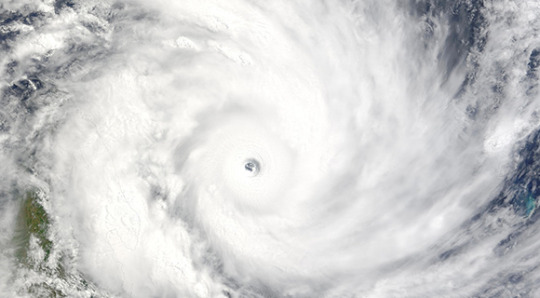
Hurricane Milton is making landfall in Florida, and residents across the state must prepare for the potential devastation it could bring. With forecasts predicting high winds, torrential rain, and widespread flooding, Hurricane Milton could leave communities struggling to rebuild.
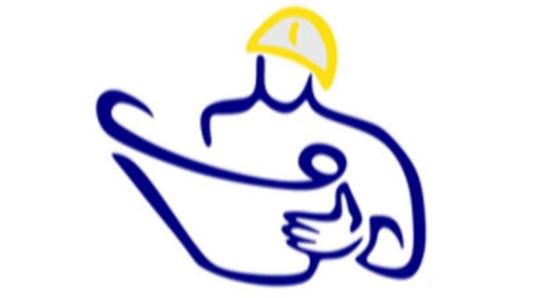
New Image Roofing Atlanta gathered information about Hurricane Milton, the damage and devastation it will likely leave in its path, valuable emergency resources, and what New Image Roofing has invested to assist the urgent upcoming recovery efforts.
New Image Roofing Florida 352-316-6008 is ready to assist residents and businesses with roofing and recovery needs. Below is a breakdown of the potential risks, necessary resources, and emergency contacts to help Floridians navigate this challenging time.
Potential Devastation from Hurricane Milton
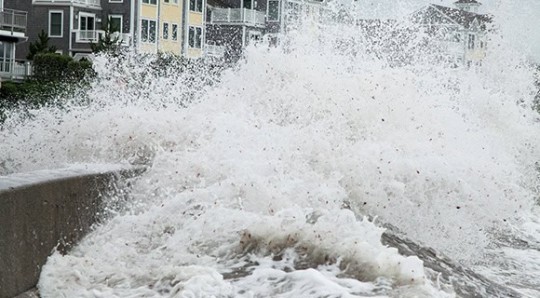
Hurricane Milton’s impact on Florida could be catastrophic. Forecasts show a Category 4 storm, and officials urge everyone to prepare for the worst. The potential damage from this hurricane could include:
Winds up to 150 mph – These extreme wind speeds can tear roofs off homes and businesses, uproot trees, and snap power lines. Flying debris could cause significant property damage and put lives at risk.
Torrential rainfall and flooding – Milton is expected to dump up to 20 inches of rain in certain areas, leading to flash flooding in low-lying regions. Coastal areas face the added threat of storm surge, which could inundate homes and infrastructure.
Watch this video to grasp the dangers of storm surge (a storm surge of 15 feet is expected with Hurricane Milton).
youtube
Power outages – Downed power lines will likely cause widespread outages. These outages may last days or weeks, leaving communities without access to essential services.
Tornadoes – Hurricane Milton’s powerful system could spawn tornadoes, particularly in the eastern parts of the state, causing additional destruction.
Watch this video to see Hurricane Milton’s approach to Florida’s west coast.
youtube
New Image Roofing Florida’s Response
New Image Roofing Florida has a strong history of helping communities recover after hurricanes. The company is prepared to assist with Hurricane Milton’s aftermath. As part of their commitment to helping Florida rebuild, New Image Roofing teams will be deployed to the most affected regions as soon as it is safe to begin repairs.
Rapid Deployment – New Image Roofing Florida teams are on standby, ready to travel to hurricane-affected areas to begin emergency repairs. Their teams specialize in patching damaged roofs, installing temporary tarps, and providing long-term roofing solutions.
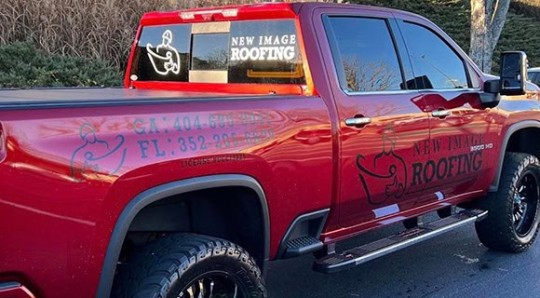
NEW IMAGE ROOFING FLORIDA 352-316-6008
Residential and Commercial Assistance – New Image Roofing Florida is equipped to handle residential and commercial properties. Their priorities are to rapidly secure buildings, prevent further water damage, and help businesses reopen quickly.
Free Inspections and Estimates – The company offers free roof inspections and damage estimates for all affected Floridians.
Experienced Hurricane Recovery Teams – With years of experience handling the aftermath of powerful storms, New Image Roofing Florida will work efficiently to secure homes, schools, businesses, and critical infrastructure.
Federal and State Resources
In the wake of Hurricane Milton, Floridians will rely on various state and federal agencies to provide essential services. Below is a list of important contacts and resources for emergency assistance, shelters, and recovery support:
Federal Emergency Management Agency (FEMA)

Website: fema.gov Phone: 1-800-621-FEMA (3362)
Services: FEMA provides disaster relief assistance, including temporary housing, emergency financial aid, and infrastructure repair.
American Red Cross
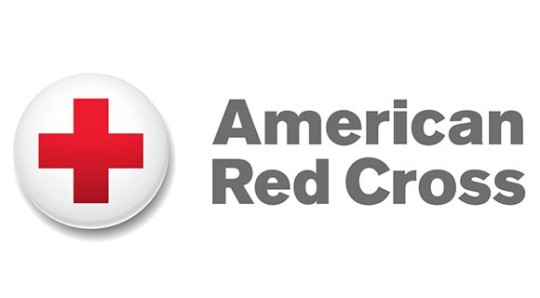
Website: redcross.org Phone: 1-800-RED-CROSS (733-2767)
Services: The Red Cross offers shelter, food, and medical support during and after disasters.
Florida Division of Emergency Management (FDEM)
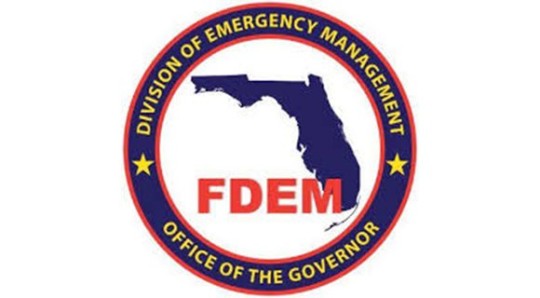
Website: floridadisaster.org Phone: 850-815-4000 State Assistance Emergency Line: 1-800-342-3557 Florida Relay Service: Dial 711 (TDD/TTY)
Services: FDEM coordinates state-wide emergency response, disaster recovery, and evacuation orders.
New Image Roofing Florida
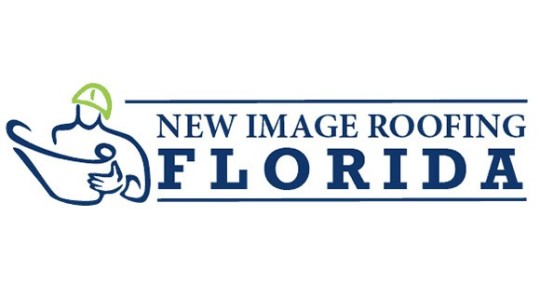
Website: newimageroofingfl.com Phone: 352-316-6008
Services: New Image Roofing Florida provides full-service emergency roof inspections, patching up damaged roofs, installing temporary tarps, and providing long-term roofing solutions. The company will also coordinate/attend adjusters meetings with your insurance agency.
Florida Power & Light (FPL)
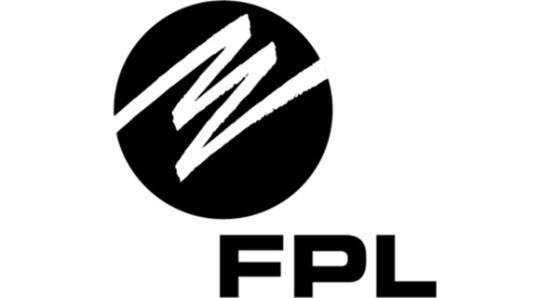
Website: fpl.com Phone: 1-800-468-8243
Services: FPL provides power outage reporting and updates on restoration timelines.
National Flood Insurance Program (NFIP)
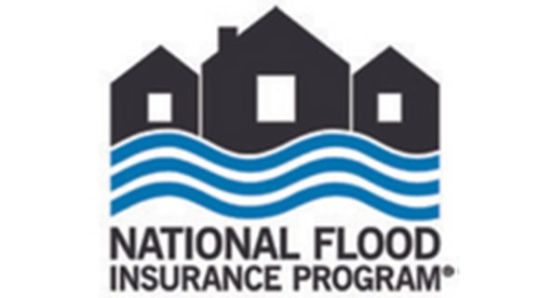
Website: floodsmart.gov Phone: 1-888-379-9531
Services: NFIP provides information about flood insurance policies and assistance with claims after flood damage.
Florida Department of Transportation (FDOT)
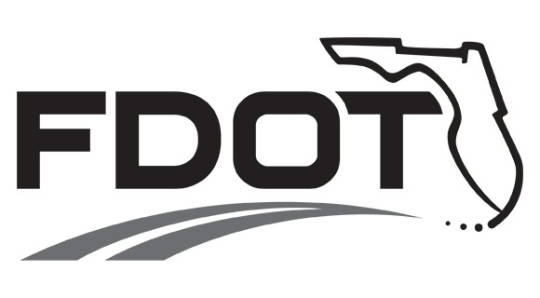
Website: fdot.gov Phone: 1-850-414-4100
Services: FDOT manages road closures and traffic conditions. They provide real-time updates about safe evacuation routes and road repairs after a storm.
Local Florida County Emergency Services
Each Florida county has emergency management teams coordinating shelters, first responders, and relief efforts. Check your county’s website for specific contact numbers and resources. At-risk counties include:
Charlotte Citrus De Soto Flagler Glades Hardee Hernando Hillsborough Manatee Pasco Pinellas Sarasota Sumter
Visit WUSF (West Central Florida’s NPR station) website for valuable local information, emergency shelter, and guidance.
Website: wusf.org
Hurricane Season Risks and Preparedness
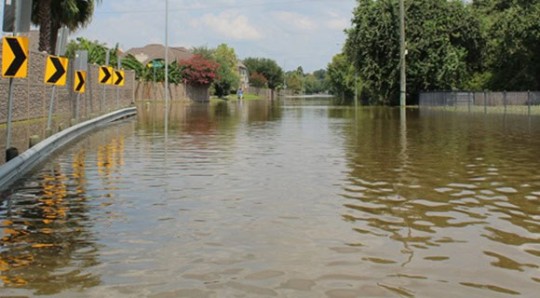
Florida’s hurricane season runs from June 1 to November 30. Hurricane Milton is hitting just as the state braces for more potential storms. The danger doesn’t end when the hurricane passes. After a storm like Milton, communities are left vulnerable to future weather events. The risk of another hurricane striking Florida before Milton’s recovery remains high.
Weakening Infrastructure – After Milton, homes and businesses will be more susceptible to damage from weaker tropical storms or hurricanes. Unrepaired roofs and weakened structures could collapse or fail under minimal pressure.
Flooding Risks – Milton’s heavy rainfall and storm surge will saturate the ground and fill waterways. This will leave communities vulnerable to even small rain events, with the potential for additional flooding.
Power Restoration Delays – With Milton causing widespread outages, the power grid may remain unstable for weeks, making it difficult for residents to recover fully before the next storm hits.
Preparing for Future Storms – Residents must begin making plans now for the rest of hurricane season. Stock up on supplies, make sure your property is secure, and stay informed about future weather developments.
Additional Tips for Hurricane Preparedness
To ensure the safety of yourself and your loved ones, follow these guidelines when preparing for a Hurricane:
Evacuate if Ordered – Listen to local officials and immediately evacuate if you are in an evacuation zone. Delaying could put your life at risk.
youtube
Secure Your Property – Install hurricane shutters, trim trees, and secure outdoor items. Consider having your roof inspected by New Image Roofing before the storm hits.
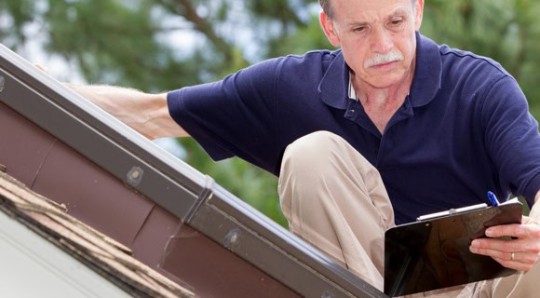
Prepare a Disaster Kit – Include essentials like water, food, medications, flashlights, batteries, and important documents.
Stay Informed – Official sources like FEMA, FDEM, and the National Weather Service offer updates and information.
Read more about hurricane preparedness at newimageroofingatlanta.com/hurricane-preparedness-a-comprehensive-guide
Hurricane Milton Resources and Recovery
In this article, you discovered information about hurricane preparedness, potential severe damage to roofs and homes, post-hurricane emergency services and resources, and how to repair your home and roof after the storm.
Your awareness and preparedness for Hurricane Milton (and coming storms) will minimize damages and help you return to normal in the storm’s aftermath.
Lack of proactive measures and delayed action will leave you uninformed, in life-threatening situations, and severely challenged to get your home and roof repaired after a hurricane sweeps through your community.
New Image Roofing Florida – 352-316-6008
Sources: fema.gov/disaster/current/hurricane-milton climate.gov/news-features/event-tracker/hurricane-milton-rapidly-intensifies-category-5-hurricane-becoming nhc.noaa.gov/refresh/graphics_at4+shtml/150217.shtml?cone
New Image Roofing Atlanta
2020 Howell Mill Rd NW Suite 232 Atlanta, GA30318 (404) 680-0041
To see the original version of this article, visit https://www.newimageroofingatlanta.com/hurricane-milton-resources-emergency-contacts-and-recovery-assistance/
#emergency roof repair#residential roofing#residential roofer atlanta#Hurricane Milton#Hurricane Emergency Resources#Hurricane Milton Emergency#Hurricane#Youtube
34 notes
·
View notes
Text

I asked chatgbt to make an image of Florida running out of homeowners insurance and flooded by a hurricane.
* * * *
LETTERS FROM AN AMERICAN
September 27, 2024
Heather Cox Richardson
Sep 28, 2024
Last night, at about 11:10 local time, Hurricane Helene made landfall in the Big Bend area of Florida, where the state’s panhandle curves down toward the peninsula. It was classified as a Category 4 storm when it hit, bringing winds of 140 miles per hour (225 km per hour). The Saffir-Simpson Hurricane wind scale, developed in 1971 by civil engineer Herbert Saffir and meteorologist Robert Simpson, divides storms according to sustained wind intensity in an attempt to explain storms on a scale similar to the Richter scale for earthquakes.
The Saffir-Simpson scale defines a Category 4 hurricane as one that brings catastrophic damage. According to the National Weather Service, which was established in 1870 to give notice of “the approach and force of storms,” and is now part of the National Oceanic and Atmospheric Administration (NOAA), a Category 4 hurricane has winds of 134–156 miles (209–251 km) per hour. “Well-built framed homes can sustain severe damage with loss of most of the roof structure and/or some exterior walls. Most trees will be snapped or uprooted and power poles downed. Fallen trees and power poles will isolate residential areas. Power outages will last weeks to possibly months. Most of the area will be uninhabitable for weeks or months.”
Hurricane Helene hit with a 15-foot (4.6 meter) storm surge and left a path of destruction across Florida before moving up into Georgia, North Carolina, South Carolina, Tennessee, Virginia, and Kentucky with torrential rain, flash floods, high winds, and tornadoes. A record level of more than eleven inches of rain fell in Atlanta, Georgia. At least 45 people have died in the path of the storm, and more than 4.5 million homes and businesses across ten states are without power. The roads in western North Carolina are closed. Moody’s Analytics said it expects the storm to leave $15 to $26 billion in property damage.
Officials from NOAA, the scientific and regulatory agency that forecasts weather and monitors conditions in the oceans and skies, predict that record-warm ocean temperatures this year will produce more storms than usual. NOAA hurricane scientist Jeff Masters noted that Helene’s landfall “gives the U.S. a record eight Cat 4 or Cat 5 Atlantic hurricane landfalls in the past eight years (2017–2024), seven of them being continental U.S. landfalls. That’s as many Cat 4 and 5 landfalls as occurred in the prior 57 years.”
President Joe Biden approved emergency declarations for Alabama, Florida, Georgia, North Carolina, and South Carolina before Helene made landfall. Tennessee governor Bill Lee, a Republican, did not ask for such a declaration until this evening, instead proclaiming September 27 a “voluntary Day of Prayer and Fasting.” Observers pointed out that with people stuck on a hospital roof in the midst of catastrophic flooding in his state, maybe an emergency declaration would be more on point.
After a state or a tribal government asks for federal help, an emergency declaration enables the federal government to provide funds to supplement local and state emergency efforts, as well as to deploy the Federal Emergency Management Agency (FEMA) to help save lives, protect property, and protect health and safety. Before Helene made landfall, the federal government placed personnel and resources across the region, ready to help with search and rescue, restore power, and provide food and water and emergency generators.
The federal government sent 1,500 federal personnel to the region, as well as about 8,000 members of the U.S. Coast Guard and teams from the Army Corps of Engineers to provide emergency power. It provided two health and medical task forces to help local hospitals and critical care facilities, and sent in more than 2.7 million meals, 1.6 million liters of water, 50,000 tarps, 10,000 cots, 20,000 blankets, 70,000 gallons of diesel fuel, and 40,000 gallons of gasoline to provide supplies for those hit by the catastrophe.
FEMA was created in 1979 after the National Governors Association asked President Jimmy Carter to centralize federal emergency management functions. That centralization recognized the need for coordination as people across the country responded to a disaster in any one part of it. When a devastating fire ripped through Portsmouth, New Hampshire, the day after Christmas in 1802, Congress agreed to send aid to the town, but volunteers organized by local and state governments and funded by wealthy community members provided most of the response and recovery efforts for the many disasters of the 1800s.
When a deadly hurricane wiped out Galveston, Texas, in 1900, killing at least 6,000 residents and destroying most of the city’s buildings, the inept machine government proved unable to manage the donations pouring in from across the country to help survivors. Six years later, when an earthquake badly damaged San Francisco and ensuing fires from broken gas lines engulfed the city in flames, the interim fire chief—who took over when the fire chief was gravely injured—called in federal troops to patrol the streets and guard buildings. More than 4,000 Army troops also fed, sheltered, and clothed displaced city residents.
When the Mississippi River flooded in 1927, sending up to 30 feet (9 meters) of water across ten states, including Arkansas, Mississippi, and Louisiana, killing about 500 people and displacing hundreds of thousands more, President Calvin Coolidge appointed Commerce Secretary Herbert Hoover to coordinate the federal disaster response and pull together the many private-sector interests eager to help out under federal organization. This marked the first time the federal government took charge after a disaster.
In 1950, Congress authorized federal response to disasters when it passed the Federal Disaster Assistance Program. In response to the many disasters of the 1960s—the 1964 Alaska Earthquake, Hurricane Betsy in 1965, and Hurricane Camille in 1969—the Department of Housing and Urban Development established a way to provide housing for disaster survivors. Congress provided guaranteed flood insurance to homeowners, and in 1970 it also authorized federal loans and federal funding for those affected by disasters.
When he signed the Disaster Relief Act of 1970, Republican president Richard Nixon said: “I am pleased with this bill which responds to a vital need of the American people. The bill demonstrates that the Federal Government in cooperation with State and local authorities is capable of providing compassionate assistance to the innocent victims of natural disasters.”
Four years later, Congress established the process for a presidential disaster declaration. By then, more than 100 different federal departments and agencies had a role in responding to disasters, and the attempts of state, tribal, and local governments to interface with them created confusion. So the National Governors Association asked President Carter to streamline the process. In Executive Order 12127 he brought order to the system with the creation of FEMA.
In 2003, after the September 11, 2001, terrorist attacks on the U.S., the George W. Bush administration brought FEMA into its newly-created Department of Homeland Security, along with 21 other agencies, wrapping natural disasters together with terrorist attacks as matters of national security. After 2005’s Hurricane Katrina required the largest disaster response in U.S. history, FEMA’s inadequate response prompted a 2006 reform act that distinguished responding to natural disasters from responding to terrorist attacks. In 2018, another reform focused on funding for disaster mitigation before the crisis hits.
The federal government’s efficient organization of responses to natural disasters illustrates that as citizens of a republic, we are part of a larger community that responds to our needs in times of crisis.
But that system is currently under attack. Project 2025, a playbook for the next Republican administration, authored by allies of the right-wing Heritage Foundation and closely associated with Republican presidential candidate Trump and vice presidential candidate Ohio senator J.D. Vance, calls for slashing FEMA’s budget and returning disaster responses to states and localities.
Project 2025 also calls for dismantling the National Oceanographic and Atmospheric Administration and either eliminating its functions, sending them to other agencies, privatizing them, or putting them under the control of states and territories. It complains that NOAA, whose duties include issuing hurricane warnings, is “one of the main drivers of the climate change alarm industry and, as such, is harmful to future U.S. prosperity.”
LETTERS FROM AN AMERICAN
HEATHER COX RICHARDSON
#Heather Cox Richardson#letters from an american#American History#weather#hurricanes#Project 2025#FEMA#NOAA#flooding#Army Corps of Engineers#Heritage Foundation
8 notes
·
View notes
Text
Mosaic Roofing Company LLC
Emergency Roofing Services Update in Grove Park, Atlanta, Georgia Dear Community, Today, our team from Mosaic Roofing Company was dispatched to provide emergency roofing services in the Grove Park neighborhood of Atlanta, Georgia, when we were met with an unimaginable tragedy. It is with heavy hearts that we share that there has been a fatality at the property we were called to assist. In light of this heartbreaking situation, we have made the decision to pause all services at this location. Our thoughts and deepest condolences go out to the family affected during this incredibly difficult time. We understand that healing and processing grief take precedence, and we respect their need for privacy. We appreciate your understanding and support as we navigate through this somber moment. Sincerely, The Mosaic Roofing Company Team
#Roof Repair Atlanta GA#Commercial Roofing Atlanta GA#Roof Replacement Atlanta GA#Roof Installation Atlanta GA#Roof Installation Sandy Springs GA.
0 notes
Text
Roofing Services Nearby
If you’re searching for a reliable roofing contractor near me Sandy Springs, choose First Choice Roofing of Georgia. Whether you need residential roofing or commercial services, they’ve got you covered. Their team is known for providing quality work that lasts, whether you’re dealing with a roof leak or a full replacement. Serving the Sandy Springs area for years, they specialize in making sure your home or business is safe from the elements. When you choose them, you’re working with professionals who understand the importance of strong, durable roofs. With their attention to detail and years of experience, you’ll feel confident that your roof is in great hands. Give them a call and see why so many people trust them with their roofing needs.
The Transportation System in Sandy Springs, Georgia
Getting around Sandy Springs can be a mixed experience. If you drive, you’ll appreciate the well-maintained roads, though traffic during rush hour can test your patience. MARTA, the metro system, makes it easier for commuters to get into Atlanta, especially if you live near a station. Walking isn’t as common since the city is spread out, but some areas, like City Springs, are more pedestrian-friendly. Rideshare options like Uber and Lyft are plentiful, and bike lanes are slowly becoming more common. If you’re flying, Hartsfield-Jackson Airport is about a 30-minute drive away, depending on traffic. Sandy Springs gives you a lot of ways to move around, but you’ll need to plan ahead during busy times.
Chattahoochee River National Recreation Area in Sandy Springs, Georgia
The Chattahoochee River National Recreation Area is a nature lover’s dream. If you’re into kayaking, fishing, or just being by the water, this is your spot. The trails along the river are peaceful and great for walking or biking, with plenty of places to stop and take in the views. It’s a popular spot, but it never feels too crowded because there’s so much space to explore. You’ll see locals enjoying picnics, birdwatching, or just relaxing by the water’s edge. Parking is usually easy to find, and the vibe is super chill. Whether you’re looking for adventure or just want to slow down for a bit, the park gives you a chance to connect with nature close to home.
Sandy Springs Police To Form Its Own SWAT Team
Creating its own SWAT team seems like a practical move for Sandy Springs, given its size and the city’s specific needs. Having a dedicated team ensures quicker response times and a more tailored approach to handling high-risk situations. It’s reassuring that the city isn’t incurring additional costs since they’re using existing personnel and equipment. That said, it’s important to consider how this change might affect collaboration with neighboring cities. The ability to support each other in emergencies has always been a strength of regional teams. Hopefully, Sandy Springs’ decision won’t strain relationships or resources among its former North Metro SWAT partners. In the end, this feels like a calculated step toward greater local autonomy in public safety.
Link to map
Chattahoochee River National Recreation Area 1978 Island Ford Pkwy, Sandy Springs, GA 30350, United States Head northwest on Island Ford Pkwy toward Roberts Dr Restricted usage road 1 sec (20 ft) Take GA-400 S/US-19 S and Hammond Dr NE to your destination 12 min (7.0 mi) Drive to your destination 19 sec (72 ft) First Choice Roofing of Georgia 278 Sandy Springs Pl NE, Sandy Springs, GA 30328, United States
0 notes
Text
Top Water Damage Cleanup Services in Atlanta: Fast, Reliable & Efficient
Water damage can be a homeowner's worst nightmare. From burst pipes to natural disasters, the aftermath can be devastating. In Atlanta, where heavy rains and storms can lead to significant water issues, having access to top-notch water damage cleanup services is crucial. This guide explores the best water damage cleanup services in Atlanta, highlighting their reliability and efficiency in restoring your property.
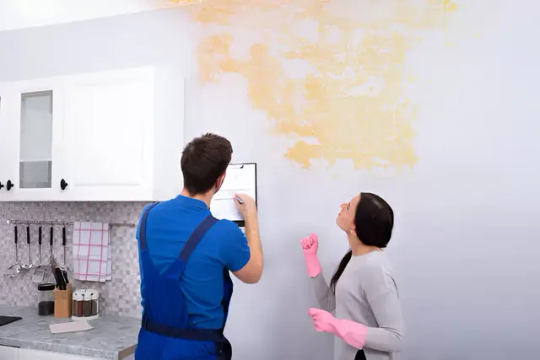
Restoration Damage Pros
Understanding Water Damage
Water damage refers to any damage caused by water intruding into areas where it can cause harmful effects, such as structural damage, mold growth, or personal property loss. It can result from various sources, including:
Flooding: Heavy rains or storms can cause local flooding.
Burst Pipes: Aging or frozen pipes can burst and cause significant water loss.
Roof Leaks: Damaged roofs can lead to water leaks during rainstorms.
Appliance Malfunctions: Dishwashers, washing machines, and water heaters can leak or fail.
Understanding these causes helps homeowners take preventive measures and respond quickly when water damage occurs.
Importance of Professional Cleanup Services
When water damage strikes, time is of the essence. Delaying cleanup can lead to:
Increased Damage: The longer water sits, the more extensive the damage becomes.
Mold Growth: Mold can start growing within 24-48 hours after water exposure, posing health risks.
Structural Integrity Issues: Prolonged water exposure can weaken your home's structure.
Professional cleanup services offer a swift response, helping to mitigate these risks. Here are the key benefits of hiring experts:
Fast Response Times: Most reputable services respond within hours, ensuring immediate action.
Advanced Equipment: Professionals use industrial-grade equipment for efficient water extraction and drying.
Expertise and Experience: Trained technicians know how to handle different types of water damage, ensuring a thorough cleanup.
Insurance Assistance: Many companies can help you navigate the insurance claims process, making it easier to recover costs.
Top Water Damage Cleanup Services in Atlanta
Here are some of the best water damage cleanup services in Atlanta that combine speed, reliability, and efficiency:
RDP Restoration
Overview: RDP Restoration is a top-rated water damage cleanup service in Atlanta, offering 24/7 emergency response. They specialize in residential and commercial water damage restoration and utilize state-of-the-art equipment to ensure thorough cleanup and drying.
Services Offered: Water extraction, mold remediation, structural repairs, and odor removal.
Customer Feedback: RDP Restoration is known for its quick response times and customer-focused approach, with many clients praising their professionalism and attention to detail.
ServiceMaster Restore
Overview: ServiceMaster Restore has a strong presence in Atlanta, providing comprehensive water damage restoration services. With years of experience, they offer reliable and efficient solutions for both residential and commercial properties.
Services Offered: Water extraction, dehumidification, mold remediation, and rebuilding services.
Customer Feedback: Clients appreciate their prompt response and the thoroughness of their work, often noting the professionalism of the technicians.
Paul Davis Restoration
Overview: Paul Davis Restoration has been a trusted name in the restoration industry for decades. Their Atlanta branch offers water damage cleanup services that include a full range of restoration solutions.
Services Offered: Water damage cleanup, mold remediation, fire damage restoration, and storm damage repair.
Customer Feedback: Customers frequently mention their effective communication and the quality of the restoration work, making them a reliable choice in emergencies.
SERVPRO of North Atlanta
Overview: As part of the nationwide SERVPRO franchise, SERVPRO of North Atlanta offers extensive water damage cleanup services. Their commitment to customer satisfaction and thorough training ensures quality service.
Services Offered: Water removal, drying, mold mitigation, and reconstruction.
Customer Feedback: Clients rave about their responsiveness and the effectiveness of their services, especially during emergencies
Choosing the Right Water Damage Cleanup Service
When selecting a water damage cleanup service in Atlanta, consider the following factors:
Response Time: Look for companies that offer 24/7 emergency services to ensure quick action.
Certifications: Verify that the company has the necessary certifications, such as from the Institute of Inspection, Cleaning and Restoration Certification (IICRC).
Insurance Coverage: Ensure the company is insured to protect yourself from liability.
Customer Reviews: Check online reviews and testimonials to gauge the company’s reputation and reliability.
Services Offered: Choose a company that offers comprehensive services, from water extraction to reconstruction, to cover all your needs.
Tips for Homeowners After Water Damage
If you experience water damage, here are some steps to take immediately:
Turn Off the Water Supply: If the source of the water damage is internal, turn off the main water supply to prevent further flooding.
Document the Damage: Take photos of the damage for insurance purposes.
Remove Valuables: If safe to do so, remove valuable items and furniture from the affected area to minimize damage.
Do Not Use Electrical Appliances: Avoid using electrical devices in wet areas to prevent electrocution.
Contact Professionals: Call a reliable water damage cleanup service as soon as possible to begin the restoration process.
Conclusion
Water damage can disrupt your life and damage your property, but with the help of top water damage cleanup services in Atlanta, you can restore your home efficiently and effectively. Companies like RDP Restoration, ServiceMaster Restore, Paul Davis Restoration, SERVPRO of North Atlanta, and Stanley Steemer are ready to assist you in your time of need. Remember to act quickly, choose a qualified service, and follow the necessary steps to mitigate damage. With professional help, you can return your home to its pre-damage condition and gain peace of mind.
For more information on RDP Restoration and their services, visit rdpatl.com.
1 note
·
View note
Text
Gutter Installation Company in Atlanta, GA: Ensuring a Secure and Well-Managed Home
Gutters are often an overlooked aspect of home maintenance, but their importance in preserving the structure of a house cannot be overstated. In a city like Atlanta, GA, where unpredictable weather, including heavy rain and storms, can be a regular occurrence, having a reliable gutter system is essential. This is where professional gutter installation companies come into play. They ensure that homes are equipped with efficient and durable gutters, safeguarding against potential water damage, foundation erosion, and more.
If you are a homeowner in Atlanta, understanding the benefits of working with a trusted gutter installation company is crucial. Below, we explore the importance of gutters, the installation process, and why hiring a local company for your gutter needs is the best decision you can make.
The Role of Gutters in Home Protection
Gutters serve one primary purpose: to direct rainwater away from your home’s foundation. Without a functional gutter system, rainwater can accumulate around your home, leading to soil erosion, foundation cracks, and water damage to your basement or crawl space. Furthermore, uncollected water running down your walls can lead to mold growth, wood rot, and costly structural repairs. Simply put, gutters are a vital part of maintaining the health and longevity of your home.
Why You Need a Professional Gutter Installation Company
Hiring a professional gutter installation company ensures that you have the right system in place for your specific needs. Every home is unique, and factors such as roof size, slope, and rainfall patterns all impact the type of gutter system that will work best. Professionals can assess your home and recommend the appropriate materials and installation techniques. Additionally, a quality installation prevents issues like leaking, clogging, or sagging—problems that can occur with DIY installations or poor-quality work.
The Gutter Installation Process
When you choose a reputable Gutter Installation Company in Atlanta GA, the process typically begins with an in-home consultation. During this time, experts assess your home’s structure and drainage needs. This step is crucial in determining the proper type of gutter, size, and layout to ensure water flows efficiently away from your home.
Next, the team will discuss the materials and styles available for your gutters. Popular options include aluminum, copper, and steel, each offering varying levels of durability and aesthetic appeal. The most commonly chosen material is aluminum due to its affordability and resistance to rust. Copper gutters, while more expensive, add a touch of elegance and last for decades.
Once you decide on the material and design, the installation team will ensure that the gutters are properly pitched and aligned with your roof. This guarantees that water flows smoothly through the gutters and downspouts, preventing pooling or overflow during heavy rain.
Local Expertise in Atlanta
One of the major advantages of hiring a local gutter installation company is their understanding of the region’s climate and architectural trends. In Atlanta, where storms can bring heavy downpours, it is essential to install gutters that can handle large volumes of water. Local professionals are familiar with these weather patterns and know which materials and designs work best in the area.
Additionally, they can help you install a New Gutter System Alpharetta, a growing suburban area near Atlanta. As new homes and neighborhoods emerge, having a reliable gutter system in Alpharetta is just as important as it is in Atlanta. Working with a nearby company ensures faster service and tailored recommendations for your home’s specific needs.
Conclusion
In conclusion, a gutter installation company in Atlanta, GA, provides invaluable services that protect your home from water damage and ensure its longevity. From selecting the right materials to expert installation, these professionals offer solutions that cater to the unique weather and architectural requirements of the region. Whether you’re in Atlanta or need a New Gutter System Alpharetta, investing in professional gutter installation is a wise decision for any homeowner.
Don't miss out on important information – check out our website.
Alpharetta Pressure Washing Services
Soft Washing in Gainesville GA
0 notes
Text
urgent commercial roof repair in atlanta
Urgent Roofing Issues that Demand Immediate Attention At Precision Commercial Solutions, we understand that roofing emergencies can occur without warning, causing significant stress and potential damage. That’s why we offer 24/7 emergency services to ensure you receive prompt and professional assistance whenever you need it.
urgent commercial roof repair in atlanta
0 notes
Text
Heather Cox Richardson
HEATHER COX RICHARDSON 9.27
Last night, at about 11:10 local time, Hurricane Helene made landfall in the Big Bend area of Florida, where the state’s panhandle curves down toward the peninsula. It was classified as a Category 4 storm when it hit, bringing winds of 140 miles per hour (225 km per hour). The Saffir-Simpson Hurricane wind scale, developed in 1971 by civil engineer Herbert Saffir and meteorologist Robert Simpson, divides storms according to sustained wind intensity in an attempt to explain storms on a scale similar to the Richter scale for earthquakes.
The Saffir-Simpson scale defines a Category 4 hurricane as one that brings catastrophic damage. According to the National Weather Service, which was established in 1870 to give notice of “the approach and force of storms,” and is now part of the National Oceanic and Atmospheric Administration (NOAA), a Category 4 hurricane has winds of 134–156 miles (209–251 km) per hour. “Well-built framed homes can sustain severe damage with loss of most of the roof structure and/or some exterior walls. Most trees will be snapped or uprooted and power poles downed. Fallen trees and power poles will isolate residential areas. Power outages will last weeks to possibly months. Most of the area will be uninhabitable for weeks or months.”
Hurricane Helene hit with a 15-foot (4.6 meter) storm surge and left a path of destruction across Florida before moving up into Georgia, North Carolina, South Carolina, Tennessee, Virginia, and Kentucky with torrential rain, flash floods, high winds, and tornadoes. A record level of more than eleven inches of rain fell in Atlanta, Georgia. At least 45 people have died in the path of the storm, and more than 4.5 million homes and businesses across ten states are without power. The roads in western North Carolina are closed. Moody’s Analytics said it expects the storm to leave $15 to $26 billion in property damage.
Officials from NOAA, the scientific and regulatory agency that forecasts weather and monitors conditions in the oceans and skies, predict that record-warm ocean temperatures this year will produce more storms than usual. NOAA hurricane scientist Jeff Masters noted that Helene’s landfall “gives the U.S. a record eight Cat 4 or Cat 5 Atlantic hurricane landfalls in the past eight years (2017–2024), seven of them being continental U.S. landfalls. That’s as many Cat 4 and 5 landfalls as occurred in the prior 57 years.”
President Joe Biden approved emergency declarations for Alabama, Florida, Georgia, North Carolina, and South Carolina before Helene made landfall. Tennessee governor Bill Lee, a Republican, did not ask for such a declaration until this evening, instead proclaiming September 27 a “voluntary Day of Prayer and Fasting.” Observers pointed out that with people stuck on a hospital roof in the midst of catastrophic flooding in his state, maybe an emergency declaration would be more on point.
After a state or a tribal government asks for federal help, an emergency declaration enables the federal government to provide funds to supplement local and state emergency efforts, as well as to deploy the Federal Emergency Management Agency (FEMA) to help save lives, protect property, and protect health and safety. Before Helene made landfall, the federal government placed personnel and resources across the region, ready to help with search and rescue, restore power, and provide food and water and emergency generators.
The federal government sent 1,500 federal personnel to the region, as well as about 8,000 members of the U.S. Coast Guard and teams from the Army Corps of Engineers to provide emergency power. It provided two health and medical task forces to help local hospitals and critical care facilities, and sent in more than 2.7 million meals, 1.6 million liters of water, 50,000 tarps, 10,000 cots, 20,000 blankets, 70,000 gallons of diesel fuel, and 40,000 gallons of gasoline to provide supplies for those hit by the catastrophe.
FEMA was created in 1979 after the National Governors Association asked President Jimmy Carter to centralize federal emergency management functions. That centralization recognized the need for coordination as people across the country responded to a disaster in any one part of it. When a devastating fire ripped through Portsmouth, New Hampshire, the day after Christmas in 1802, Congress agreed to send aid to the town, but volunteers organized by local and state governments and funded by wealthy community members provided most of the response and recovery efforts for the many disasters of the 1900s.
When a deadly hurricane wiped out Galveston, Texas, in 1900, killing at least 6,000 residents and destroying most of the city’s buildings, the inept machine government proved unable to manage the donations pouring in from across the country to help survivors. Six years later, when an earthquake badly damaged San Francisco and ensuing fires from broken gas lines engulfed the city in flames, the interim fire chief—who took over when the fire chief was gravely injured—called in federal troops to patrol the streets and guard buildings. More than 4,000 Army troops also fed, sheltered, and clothed displaced city residents.
When the Mississippi River flooded in 1927, sending up to 30 feet (9 meters) of water across ten states, including Arkansas, Mississippi, and Louisiana, killing about 500 people and displacing hundreds of thousands more, President Calvin Coolidge appointed Commerce Secretary Herbert Hoover to coordinate the federal disaster response and pull together the many private-sector interests eager to help out under federal organization. This marked the first time the federal government took charge after a disaster.
In 1950, Congress authorized federal response to disasters when it passed the Federal Disaster Assistance Program. In response to the many disasters of the 1960s—the 1964 Alaska Earthquake, Hurricane Betsy in 1965, and Hurricane Camille in 1969—the Department of Housing and Urban Development established a way to provide housing for disaster survivors. Congress provided guaranteed flood insurance to homeowners, and in 1970 it also authorized federal loans and federal funding for those affected by disasters.
When he signed the Disaster Relief Act of 1970, Republican president Richard Nixon said: “I am pleased with this bill which responds to a vital need of the American people. The bill demonstrates that the Federal Government in cooperation with State and local authorities is capable of providing compassionate assistance to the innocent victims of natural disasters.”
Four years later, Congress established the process for a presidential disaster declaration. By then, more than 100 different federal departments and agencies had a role in responding to disasters, and the attempts of state, tribal, and local governments to interface with them created confusion. So the National Governors Association asked President Carter to streamline the process. In Executive Order 12127 he brought order to the system with the creation of FEMA.
In 2003, after the September 11, 2001, terrorist attacks on the U.S., the George W. Bush administration brought FEMA into its newly-created Department of Homeland Security, along with 21 other agencies, wrapping natural disasters together with terrorist attacks as matters of national security. After 2005’s Hurricane Katrina required the largest disaster response in U.S. history, FEMA’s inadequate response prompted a 2006 reform act that distinguished responding to natural disasters from responding to terrorist attacks. In 2018, another reform focused on funding for disaster mitigation before the crisis hits.
The federal government’s efficient organization of responses to natural disasters illustrates that as citizens of a republic, we are part of a larger community that responds to our needs in times of crisis.
But that system is currently under attack. Project 2025, a playbook for the next Republican administration, authored by allies of the right-wing Heritage Foundation and closely associated with Republican presidential candidate Trump and vice presidential candidate Ohio senator J.D. Vance, calls for slashing FEMA’s budget and returning disaster responses to states and localities.
Project 2025 also calls for dismantling the National Oceanographic and Atmospheric Administration and either eliminating its functions, sending them to other agencies, privatizing them, or putting them under the control of states and territories. It complains that NOAA, whose duties include issuing hurricane warnings, is “one of the main drivers of the climate change alarm industry and, as such, is harmful to future U.S. prosperity.”
1 note
·
View note
Text
Emergency Roofing Services in Atlanta, Georgia: Quick Response for Urgent Repairs
When unexpected damage hits your roof, waiting for repairs is not an option. Whether it's due to severe weather, fallen trees, or sudden leaks, emergency roofing services are essential to protect your home from further damage. In Atlanta, Georgia, where storms and high winds are common, having a reliable roofing contractor on call is crucial for fast and efficient solutions.
Why You Might Need Emergency Roofing Services
Storm Damage Atlanta’s weather can be unpredictable, with storms often bringing heavy rain, high winds, and even hail. These extreme conditions can cause shingles to tear away, gutters to clog and overflow, and trees or debris to fall onto your roof. Any of these issues can create vulnerabilities, leading to leaks or structural damage. Emergency roofing services are critical to patching up these issues before they worsen.
Water Leaks and Roof Damage A leaking roof is more than just an inconvenience; it can lead to significant damage inside your home. Water infiltration can cause mold, mildew, and rot, weakening the integrity of your home’s structure. Whether you notice a small drip or a major leak, immediate attention is necessary to prevent long-term issues.
Fallen Trees or Debris If a tree limb or large debris crashes onto your roof, it can cause severe structural damage. Emergency roofers will assess the damage, remove any hazards, and implement temporary solutions to keep your home protected until permanent repairs can be made.
What to Expect from Emergency Roofing Services in Atlanta
When you call for emergency roofing services, time is of the essence. A professional roofing team will arrive quickly, assess the damage, and take steps to secure your roof and prevent further damage. Here’s what the process typically involves:
Immediate Inspection and Temporary Solutions Roofing contractors will perform a fast inspection to determine the extent of the damage. If it’s unsafe to complete permanent repairs immediately (such as during ongoing storms), they will implement temporary fixes like tarping or sealing the roof to prevent water from entering the home.
Comprehensive Damage Assessment After securing your roof, the next step is a full damage assessment. This includes identifying all affected areas, from shingles and flashing to the underlying structure, to ensure no issues are overlooked.
Permanent Repairs Once the storm passes or the immediate threat is contained, roofers will return to perform permanent repairs. These may include replacing damaged shingles, repairing structural components, or fixing leaks to restore your roof to its full functionality.
The Importance of Professional Roofers for Emergencies
Attempting to handle emergency roof repairs on your own is not only dangerous but may also leave you vulnerable to further issues. Professional roofing contractors have the tools, experience, and expertise to manage emergency situations efficiently. They also understand local Atlanta weather patterns, allowing them to recommend the best solutions for long-term durability.
Conclusion
If you’re facing emergency roofing services in Atlanta, Georgia, don't wait—call for professional emergency roofing services immediately. Whether you’re dealing with storm damage, water leaks, or fallen debris, prompt action is key to protecting your home from further harm. By relying on expert roofers, you’ll receive the fast, effective solutions you need to secure your roof and safeguard your home.
0 notes
Text
Storm Damage Roof Repair In Atlanta GA

For 24/7 storm damage roof repair in Atlanta, GA, trust RST Roofing & Renovations. Our expert team responds quickly to assess and repair your roof after severe weather, ensuring your home stays protected. We handle everything from emergency tarp installation to comprehensive repairs, restoring your roof's integrity and giving you peace of mind. Contact us anytime for reliable, professional service.
0 notes
Text
Lightning Strikes on Commercial Roofs – Risks, Damage, and Prevention

Avoid revenue loss, severe structural damage, and destructive power surges when lightning strikes your commercial building. Understanding the power lightning carries and how to divert it will help prevent catastrophic lightning damage to your building and business.

New Image Roofing Atlanta gathered information about how lightning strikes wreak havoc on electrical systems, appliances, and structural elements and what you can do to mitigate them.
What Attracts Lightning to Commercial Buildings?
Lightning naturally seeks the shortest and easiest path to the ground. It is attracted to:
Tall Structures – Taller buildings and structures become prime targets for lightning strikes. The higher a building rises above its surroundings, the greater the chance lightning will strike it. This is particularly true for skyscrapers, factories, and commercial complexes.
Metallic Objects – Lightning also seeks conductive materials like metals. Many commercial buildings use metal roofs, have rooftop equipment, or feature metal structures that make them more attractive to lightning.
Rooftop Equipment – Antennas, HVAC units, satellite dishes, and other equipment on commercial roofs provide pathways for lightning to reach the building’s electrical systems.
These objects increase the likelihood of a direct hit during a storm.
Water or Moisture – Wet surfaces act as efficient conductors for electricity. A wet commercial roof, especially metal, can amplify the chances of a lightning strike and increase the damage potential.
Visit FEMA’s National Lightning Risk Index to see your area’s relative risk for lightning strikes HERE.
Energy in a Lightning Strike

Lightning carries immense energy, capable of causing catastrophic damage. The average lightning bolt can have between 1 billion and 10 billion volts of electricity, with current ranging from 30,000 to 300,000 amperes.
The energy released during a lightning strike happens in microseconds, making it incredibly destructive. The heat and force can set fire to combustible materials. At the same time, the sheer electrical energy can cause massive surges in electrical systems.
Note: A lightning strike can exceed 50,000°F (five times hotter than the sun’s surface).
Potential Damage to Commercial Buildings and Electronics
A lightning strike on a commercial roof can cause multiple damage types, ranging from minor structural issues to significant system failures. These are among the most common damages:
Fire – The extreme temperatures generated by a lightning strike can ignite roofing materials, insulation, or even the building’s framing. Commercial buildings with combustible roofing material or stored flammable materials are particularly vulnerable to lightning fires.
Roof Damage – A lightning strike can blow holes in a roof, crack tiles, damage membranes, or displace entire sections of roofing material. These openings allow water to enter the building, leading to leaks and further structural damage.
Electrical Surges – When lightning strikes a commercial building, the electrical surge that follows can:
Overload wiring systems
Destroy electronics
Seize HVAC systems
Shut down security systems
Render essential building infrastructure (including elevators) unusable
Computers, servers, and other equipment sensitive to power surges are especially at risk.

Structural Damage – A lightning strike can disrupt structural elements. A lightning strike can crack walls, damage windows, and shift a building’s foundation. These damages pose severe risks to the building’s safety and stability.
Who to Call After a Lightning Strike

After a lightning strike, taking immediate action to assess the damage and ensure the building’s occupant’s safety is crucial. Here’s who you should contact:
Emergency Services – If you detect any fire or gas leaks following a lightning strike (call emergency services immediately). Firefighters can quickly address visible fires, while police can help secure the area if needed.
Electrician – A licensed electrician should assess the electrical systems for damage. Electrical surges from lightning can cause hidden damage to wiring, outlets, and equipment that may not be immediately visible but can pose a risk of fires or system failures later on.
Roofing Contractor – A ROOFING PROFESSIONAL needs to inspect the roof for punctures, cracks, or any damage to the roofing materials. Even small holes can lead to significant water damage over time if not repaired promptly.
HVAC Technician – Many commercial buildings have HVAC units installed on the roof, which are highly vulnerable during a lightning strike. A technician should inspect HVAC systems to ensure they function without severe electrical damage.
Insurance Company – Contact your insurance provider to report the damage and initiate a claim. Document all visible damage, including photographs and written descriptions, as part of the claim process.
Watch this video for more information about insurance policies and how deductibles work.
youtube
Preventing Lightning Damage to Commercial Buildings
While you cannot prevent lightning strikes, you can take measures to reduce damage risks and protect your building. Here are some steps building owners can take:
Install a Lightning Protection System (LPS) – A lightning protection system consists of lightning rods, conductor cables, and ground rods that work together to safely direct the energy from a lightning strike away from the building and into the ground. LPS systems are essential for taller buildings or in areas prone to thunderstorms.

Lightning Rods – These rods, installed on the roof or other high points, attract and minimize lightning strikes.
Conductors – These cables carry the electrical charge from the rod down to the ground without letting it pass through the building.
Grounding System – Ground rods safely dissipate the energy into the ground, preventing it from entering the building’s systems.
Use Surge Protectors – Commercial buildings should have surge protection devices (SPDs) in their electrical systems. These devices protect against voltage spikes caused by lightning strikes and prevent damage to sensitive electronics.
Whole-building surge protectors work by diverting excess voltage away from electrical systems, ensuring appliances, computers, and other devices do not suffer damage.
Maintain a Safe Distance Between Trees and Buildings – Trees near commercial buildings can act as lightning attractors. If a lightning strike hits a tree, it may cause large branches to fall on the roof, leading to additional damage. Regular tree trimming and ensuring no large trees are close to the building will help reduce this risk.
Install Non-Conductive Roofing Materials – Buildings with metal roofing systems are more attractive to lightning strikes due to metal’s conductive nature. Consider installing non-metallic roofing materials that offer fire resistance, reducing the likelihood of fires after a strike.
HVAC and Rooftop Equipment Shielding – Ensure rooftop equipment like HVAC systems, antennas, and satellite dishes are properly shielded and grounded to protect them from lightning damage. Adding surge protectors for these systems can further prevent damage.
Lightning and Commercial Buildings
In this article, you discovered how lightning strikes are attracted to commercial buildings, the damage they cause, how to divert them, and what to do after one.
Knowing how to divert or prevent commercial building lightning strikes can help you avoid severe structural and electrical damage.
Ignoring the need for lightning protection systems and using non-conductive material in your building’s construction can lead to catastrophic damage to your structure and electronic systems/equipment and result in indefinite business closure.
Sources: noaa.gov/jetstream/lightning/lightning-safety nvlpubs.nist.gov/nistpubs/Legacy/IR/nistir89-4113.pdf
New Image Roofing Atlanta
2020 Howell Mill Rd NW Suite 232 Atlanta, GA30318 (404) 680-0041
To see the original version of this article, visit https://www.newimageroofingatlanta.com/lightning-strikes-on-commercial-roofs-risks-damage-and-prevention/
#atlanta commercial roofer#commercial roofer atlanta ga#commercial roofing atlanta#commercial roofer#low slope roof#emergency roof repair#flat roof#Lightning#Lightning Roof Damage#Youtube
1 note
·
View note
Text

investigate the wide range of services provided by experienced roofers in Atlanta who are dedicated to delivering high-quality roofing solutions for residential properties. The process starts with a thorough inspection of the roofing system, ensuring that any issues are identified and addressed promptly. From emergency repairs to complete roof replacements, these roofers utilize premium materials and expert techniques to guarantee durability and safety for every home.
0 notes
Text
Mosaic Roofing Company LLC
of Mosaic Roofing Company: Emergency Services for Tree Damage from Winter Storm Cora in Atlanta, Georgia Mosaic Roofing Company, serving Atlanta, Georgia, offers urgent assistance for homeowners affected by tree damage following winter storm Cora. Key steps to take after such an incident include ensuring safety, documenting the damage for insurance, notifying your insurance company, and contacting Mosaic Roofing for emergency services. Their services include emergency tarping to prevent further damage, thorough damage assessments, temporary repairs, and complete roof replacements using high-quality GAF materials. With a GAF certification, Mosaic Roofing Company provides 24/7 support, prioritizing the restoration and safety of your home. Contact them for immediate emergency roof repair assistance in Atlanta.
#Roof Repair Atlanta GA#Commercial Roofing Atlanta GA#Roof Replacement Atlanta GA#Roof Installation Atlanta GA#Roof Installation Sandy Springs GA.
0 notes
Text
CBD Email List Scraping Services
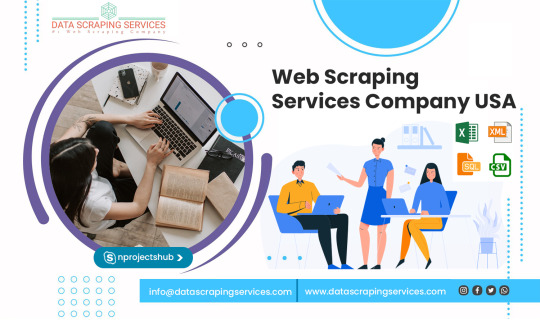
Navigating the CBD Market with Datascrapingservices.com's CBD Email List. The CBD industry has emerged as a dynamic and rapidly growing market, with businesses vying for attention in this space. For marketers and businesses looking to establish a presence and connect with the right audience in the CBD sector, Datascrapingservices.com introduces its invaluable resource - the CBD Email List. In this article, we'll explore the significance of this email list and why Datascrapingservices.com stands out as the go-to source for data in the CBD industry.
1. Targeted Marketing: The CBD Email List from Datascrapingservices.com offers direct access to a highly targeted audience within the CBD industry. Whether you're a CBD product manufacturer, retailer, or marketing agency, precision targeting is essential for the success of your marketing endeavors.
2. Lead Generation: Quality leads are the lifeblood of successful marketing campaigns. Datascrapingservices.com's CBD Email List provides you with a pool of potential clients, retailers, and decision-makers in the CBD industry, streamlining your lead generation efforts and saving you valuable time and resources.
3. Personalized Marketing: Personalization is paramount in the competitive CBD market. With detailed information about key professionals in the industry, you can tailor your marketing campaigns, ensuring they resonate with your target audience and increase the likelihood of conversions.
4. Market Research and Competitive Analysis: Staying informed about industry trends, emerging CBD products, and competitor strategies is crucial. The data collected in the CBD Email List empowers you to conduct insightful market research and gain a competitive edge in the thriving CBD market.
5. Efficient Resource Allocation: Access to a pool of potential leads and detailed CBD industry information helps you allocate your marketing resources more efficiently, ensuring your efforts are focused on the most promising prospects.
6. Networking and Collaborations: Explore potential networking opportunities and collaborations within the CBD sector. Connect with retailers, manufacturers, and professionals to expand your business network and foster mutually beneficial relationships.
Datascrapingservices.com is your trusted source for high-quality data services. We understand the unique challenges and opportunities in the CBD industry and are committed to providing accurate, up-to-date, and reliable data to empower businesses in this space. Our CBD Email List is meticulously curated to ensure that you have access to the most valuable and relevant contacts in the CBD industry. In a market where precision and relevance are paramount, Datascrapingservices.com's CBD Email List empowers businesses to enhance their marketing strategies, connect with the right prospects, and stay competitive in the rapidly evolving CBD industry.
Best Email List Provider
Scraping Boat Owners Database
Scraping Mortgage Mailing Lists
Scraping Plumbers Email List
UK Schools Data Scraping
Scraping Wineries Email List
HVAC Contractors Email Scraping
Roofing Contractor Email Scraping
Plumbing Email List
Scraping University Email List
Architect Email List Scraping
Best CBD Email List Scraping Services in USA:
Fresno, Jacksonville, Louisville, Portland, Orlando, Seattle, Miami, Tulsa, Atlanta, Virginia Beach, Mesa, Chicago, Omaha, Las Vegas, Dallas, Oklahoma City, San Antonio, Long Beach, Honolulu, Washington, Charlotte, Austin, Springs, San Jose, Boston, Fort Worth, Wichita, Milwaukee, Los Angeles, Houston, San Diego, Colorado, El Paso, Tucson, New Orleans, Arlington, Columbus, Kansas City, Philadelphia, Sacramento, Nashville, Bakersfield, Raleigh, Albuquerque, Memphis, Indianapolis, San Francisco, Denver and New York.
If you're looking to amplify your presence in the CBD market or connect with key players for potential collaborations, Contact Datascrapingservices.com today to discover how our CBD Email List can revolutionize your strategy and assist you in reaching your business objectives. Your success in the CBD industry deserves nothing but the best, and Datascrapingservices.com is here to provide it. Contact us at [email protected] and experience the power of data-driven success in the CBD sector.
Website: Datascrapingservices.com
Email: [email protected]
#cbdemaillist#cbdmailinglist#emaillistscraping#emaillistprovider#datascrapingservices#webscrapingservices#webscrapingexpert
0 notes